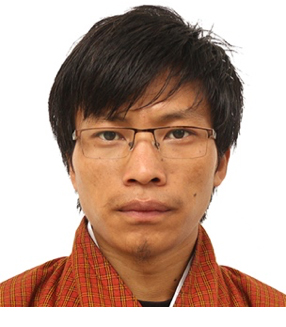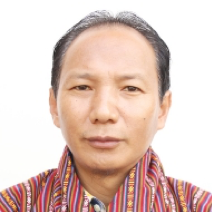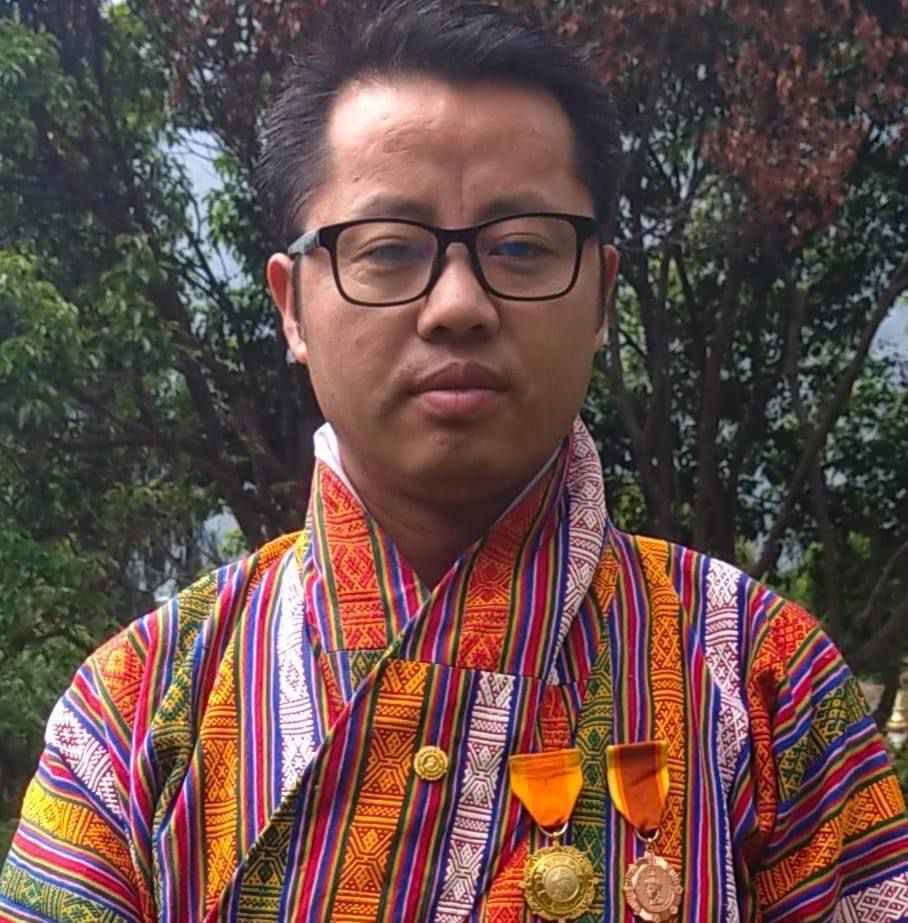The RIGSS Blog
To stimulate analysis, innovation, and forward thinking, and generate new ideas and insight
on subjects that matter in 21st Century Bhutan.
A humble tribute to celebrate learning, leadership and service that His Majesty The King continues to champion.
The views and opinions expressed in the articles on the RIGSS Blog are that of the authors and do not represent the views of the institute.
CHINA'S RURAL REVITALISATION STRATEGY AND POSSIBLE LESSONS FOR BHUTAN

Research Officer, RIGSS
China today is known widely for its remarkable poverty eradication measures. By lifting around 770 million people out of poverty from 1978 to 2020 (based on the World Bank poverty line of USD 1.9 per day), China contributed over 75 per cent of the world’s poverty eradication headcount, making it the country with the most people lifted out of poverty worldwide. In the 18th Communist Party of China (CPC) National Congress in 2012, the CPC put forward a vision to lift all the rural population out of poverty by 2020 by mobilising ‘the whole party, the whole country, and all sectors of the society’ in this endeavour. By 2020, in a span of just a few years, close to 100 million rural people were lifted out of extreme poverty in China, thereby achieving the UN 2030 Agenda for Sustainable Development poverty alleviation goal ten years ahead of schedule.
After the successful fight against poverty, the CPC, cognisant that the 840 million people living in the rural parts of the country were the most vulnerable to poverty, started formulating measures to protect them. The CPC implemented rural revitalisation, a comprehensive and holistic approach to sustainable rural development, to prevent rural poverty from resurfacing. Recognising the need to expedite the process of modernisation in the agriculture sector and the rural communities for the development of a modernised economy, the rural revitalisation strategy was first proposed during the 19th National Congress of the CPC in 2017. The CPC underscored that the rural communities were the ‘backbone of China’s overall development’ as they enhanced the country’s economic welfare by ensuring food security while preserving and promoting its unique culture and tradition. The rural revitalisation strategy was implemented to eradicate poverty through the revitalisation of rural areas with a vision to ‘build a modern, socialist country that is prosperous, strong, democratic, culturally advanced and harmonious.’ The notion was to cultivate new enterprises to encourage entrepreneurship and innovation among the rural communities by establishing industries with unique rural characteristics.
The CPC laid out four key strategies: (1) improving supplies of grain and agricultural products, (2) establishing rural agricultural product processing industries, (3) improving rural infrastructure and services such as water, power, education, health, etc, and (4) boosting rural governance. In 2018, the CPC Central Committee and the State Council issued the 2018-2022 Strategic Planning for Revitalisation of Rural Areas. This document underscored the need to modernise agriculture by developing intelligent agriculture systems and digitising agricultural production mechanisms while making the villages livable and beautiful. Moreover, the government categorised rural revitalisation into three key stages of building the foundation for a strong system by forming sound institutional frameworks and policies by 2020, making substantial progress in rural development and implementing modern techniques in agriculture by 2035, and achieving full revitalisation of the rural communities by 2050 (Liu et al., 2020).
To ensure speedy and green development of rural areas, the Rural Revitalisation Promotion Law was adopted in 2021. Encompassing a total of 10 chapters and 74 articles, among many others, the legislation covered regulations for farmland protection, outlined farmer relocation and ecological compensation systems, and instituted a harvest festival and educational skill-development training for farmers. In the same year, the National Administration for Rural Revitalisation (NARR) was instituted as a key organisation to oversee and boost rural revitalisation programmes in the country. Further, the ‘No. 1 Central Document’ issued in February 2023 called for ‘enhanced efforts to ensure food security, to consolidate and expand the achievements of poverty alleviation, to speed up the construction of a strong agricultural sector, and to build livable, business-friendly and beautiful villages.’ The No. 1 Central Document is the first policy statement released annually by the CPC and the State Council that highlights the policy priorities of the fiscal year. Agriculture and rural development featured in the No. 1 Document for the 20th time in 2023.
Under the rural revitalisation scheme, the government funded the establishment and relocation of various satellite factories in rural areas (Figure 1). While it was primarily implemented to address depopulation in rural areas, this system also proved to be a win-win mechanism for both the industries and the villagers. On the one hand, this scheme provided an additional source of income for the farmers during off-season periods, and on the other hand, the factories benefited from the availability of cheap labour. The government also revived and promoted vocational and technical education in rural communities to cultivate high-quality farmers. The establishment of such skill and knowledge-building arenas greatly empowered the women and youths of the rural communities by equipping them with the necessary tools to start their personal ventures, thereby making them independent and self-reliant. Over 753,900 farmers were trained in courses such as agricultural e-commerce, smart agriculture and the use of mobile applications. A national cloud platform application was also developed with over 8,400 online agricultural courses covering a wide range of farming industries.

Figure 1: A garment factory in Henan province
Significant reforms were also carried out in the rural collective property rights system after the 2013 No. 1 Document called for strengthening farmers’ property rights protection to enhance the rural economy. Under this scheme, the ‘three-change’ reform was implemented by ‘turning rural resources into assets, capital into shares, and farmers into shareholders’ (Huang & Shi, 2023, p.5). Farmers could voluntarily turn their rights in the collective assets, such as real estate, commerce and education, into shares, and similarly, employees of the enterprises were also allotted shares based on their years of service. The shareholding system not only ensured a continuous and alternate flow of income for the farmers in the form of annual dividends, but it also motivated the villagers to contribute to the village’s overall development. This economic cooperative system also extended to agriculture, where the small plots of individual households were amalgamated into bigger ones (Figure 2) to form large-scale farmlands. Additionally, to foster growth and self-sufficiency in the communities, the government put forth Agri and ecotourism strategies along with innovative farming techniques and technologies. Agri-tech mechanisms such as machine transplanting and drone pesticide spraying were introduced in the villages. The rate of mechanisation in crop ploughing, planting and harvesting rose to 73 per cent in 2022, raising the nationwide grain harvest to over 650 million tonnes for the ninth consecutive year in 2023. Poor households were also provided financial assistance to develop and produce agricultural goods. In an effort to expedite rural revitalisation, over 118,000 km of roads were built and renovated in rural China in the first three quarters of 2023, achieving more than 90 per cent of the annual target.

Figure 2: Land amalgamation in Xiaogang village, Anhui province
With the advancement of digital facilities and internet coverage in rural areas, rural e-commerce was promoted as an essential aspect of the rural revitalisation strategy in China. According to Su et al., 2021, rural e-commerce has significantly contributed to expanding domestic demand by promoting home-grown production and consumption, thereby increasing the income of the farmers in the country. In the 2014 No 1 Document, the CPC announced the development of ‘rural electric e-commerce’ to promote economic development in rural areas. Since then, the government spent over RMB 20 billion (USD 2.8 billion) to implement various schemes, such as technical training, financial assistance and infrastructural support, to boost rural e-commerce in the country. Additionally, more than 2,600 e-commerce public and distribution centres and 150,000 rural e-commerce and express delivery stations have also been established in 1,489 Counties. More than 220 million farmers received training on mobile application skills, with over 18,900 coached to become live-streaming hosts (Hongyu & Jun, 2024). Online retail sales in rural areas increased significantly from RMB 180 billion (USD 25 billion) in 2014 to RMB 2.17 trillion (USD 304 billion) in 2022. By the end of 2022, there were over 17.3 million rural online merchants in China. The evolution of rural e-commerce contributed to employment creation for farmers, youth and city dwellers. According to an e-commerce platform in China, over 126,000 young people have returned to rural areas to start their own e-commerce ventures as of October 2021, accounting for around 13 per cent of agriculture and related vendors on the platform.

Figure 3: Chinese farmers sell and promote green tea via live-streaming
Rural revitalisation was one of the most critical policy decisions implemented to prevent poverty from resurfacing in rural areas while establishing a strong base for a developed China. This strategy not only helped ensure food security but also helped balance the widening rural-urban economic gap brought about by rapid economic development in the urban centres. There is much Bhutan can learn from China's approach to rural development. Though Bhutan is comparatively smaller than China in terms of size, population and economy, some of the challenges that China faced and that Bhutan currently faces are very similar. Like China, Bhutan is a grain-dependent country and relies heavily on agricultural imports to meet market demands, posing food security risks. In the third quarter of 2023 alone, Bhutan imported BTN 816,359,592 (USD 9.8 million) worth of rice. The COVID-19 pandemic was the biggest test of Bhutan’s vulnerability to food security, underscoring the urgency for the country to attain food self-sufficiency. In addition, Bhutan is grappling with issues pertaining to youth unemployment, rural-urban migration and urban overcrowding. According to the National Statistical Bureau, as of 2018, around 21.7 per cent of rural people migrated to urban centres, resulting in over 4,800 empty households across the country, which would have undoubtedly increased over the years. Though not as prominent, Bhutan’s rural-urban poverty divide is still notable. The rural poverty rate in 2022, calculated at the poverty line estimate of BTN 6,204 (USD 75.8) per person per month, was 17.5 per cent as opposed to the 4.2 per cent of urban areas. According to the Poverty Analysis Report, 2022, 87 per cent of the poor individuals in the country are concentrated in the rural areas.
As Bhutan forges its path of becoming a high-income country with a GDP of USD 10 billion by 2034, rural development will be an essential driver of this economic transformation. The draft 13th Five Year Plan aims to increase the agricultural output by 50 per cent while also creating employment for 125,160 individuals. To achieve these ambitious goals, lessons could be drawn from China’s approach to rural revitalisation of skilling both farmers and young people to encourage rural entrepreneurship. Agriculture and Food Security (AFS) has been introduced as an elective subject for high school students since 2013 to introduce them to the concepts of agriculture and farm management and equip them for employment. However, Ugyen & Rinchen (2021), who studied the inclusion of this subject, argue that schools face challenges such as lack of human resources, facilities, machines and other resources to facilitate a proper learning environment, thus making the subject unattractive among students. The paper also recommends adopting a more hands-on approach to teaching the subject. Hence, the concerned agencies should look deeper into these studies and execute revisions where necessary. The AFS curriculum can also be adapted to conduct skill and knowledge-building workshops for farmers and young people outside the school system.
In fact, initiatives to skill our youth in agriculture practices are already underway in the country. Food security and agriculture are some of the core skills imparted in the Desuung Skilling Programme (DSP), which was launched in April 2021 and the Gyalsung National Service (Gyalsung), which will commence later this year. Under the command of His Majesty The King, the DSP was initiated to ‘empower our youth by enhancing the capabilities and skills to enable them to lead meaningful, productive and prosperous lives.’ Desuups are trained in various fields such as Hydroponics, Horticulture, Farm Machinery, Floriculture & Landscaping, Food Security Skilling, etc. Similarly, Gyalsung was launched by His Majesty with the objective of ‘endowing every young Bhutanese with the personal attributes/discipline and professional skills needed to succeed in the 21st century and thereby contribute to nation building.’ Food security is one of the four core training areas in Gyalsung, where youths will be trained on the concepts of agricultural technology, protected agriculture, and drip agriculture.
Likewise, concepts such as agri and ecotourism can be introduced in the country’s hinterlands to improve the livelihoods of the rural population while preserving the environment. The Berti White-bellied Heron eco-lodge, a thriving community-based project in Zhemgang, is one such example of how ecotourism can be mobilised for rural development. Home to the endangered White-bellied Heron, Berti saw limited economic development opportunities; hence, the District Administration constructed the eco-lodge to provide an alternate source of livelihood for the community. The CPC ensured that its rural revitalisation strategy complemented the unique cultural heritages of the villages and did not overshadow them. China’s multi-sectoral approach of emphasising the conservation and development of cultural sites also offers lessons to learn from. This can be done through infrastructure development, public service enhancement and capacity building for both local people and public servants, focusing on good practices in cultural conservation and tourism management. The ‘Cultural Stewardship Plan’ implemented by the Department of Culture, in collaboration with the World Bank, in Nobgang village, Punakha, stands as evidence of the possibility of adopting such policies in Bhutan. With the vision to enhance local livelihood through the establishment of community enterprises focusing on promoting and preserving cultural heritages, a traditional restaurant and lodge was piloted in the village. The community-operated establishment serves indigenous and authentic Nobgang cuisine and is housed in one of the village’s unique structures, Kabu-Dharcham.
Recognising the viable opportunities in agriculture and its crucial role in nation-building, though not as notable as in China, there have been a few instances of youth taking up farming after graduation or public servants transitioning into farming in Bhutan. One such is Dorji, who runs the Happiness Farms in Paro and Punakha. His deeply rooted values of ecological responsibility and sustainable living drove him into the path of farming after 18 years in public service. On his farms, Dorji cultivates high-demand fruits such as Japanese pears, apples, avocados, high-end oranges, pineapples, dragon fruits and many more. Creative ways to engage tourists and locals by providing guided farm tours, fruit plucking and ‘Tree Membership’ programs where individuals can own fruit trees and enjoy their harvest for a specified duration have also been introduced in the Happiness Farms. While he did not receive substantial support from the government during his farming journey, Dorji acknowledges that the Million Fruit Tree Plantation project, initiated under the visionary leadership of His Majesty, has had a significant impact. The high-value fruit trees received from this initiative helped diversify and enhance the productivity of his farm produce. Further, he asserts that the prevalent issues, such as lack of market access, financial support, education and training, land resources, and recognition and incentive mechanisms, are some barriers that inhibit individuals from engaging in farming. To present farming as an attractive and viable option for young people and city dwellers, according to Dorji, the government can introduce modern farming techniques by applying drone and data analytic techniques in farming, encourage agri-entrepreneurship through financial and mentorship programmes, facilitate access to land by providing affordable access to resources and develop strong marketing and branding strategies. In addition, he also highlights the need for an engagement platform for farmers to connect, collaborate, and share their lessons and best practices to foster community vitality and make farming a ‘more socially rewarding career.’

As an agriculture-dependent economy with over 62.2 per cent still inhabiting the rural areas (as per the Population and Housing Census of Bhutan, 2017), strengthening and enhancing the rural communities and rural economies will be imperative for a developed Bhutan. Rural revitalisation emerges as one of the crucial tools to address complex developmental challenges such as food security, rural depopulation, urban overcrowding and youth unemployment. Hence, policymakers need to explore ways to enhance and improve the rural and agricultural landscape in Bhutan. Some ways to do so include providing financial support through grants, low-interest loans and subsidies, developing rural infrastructure such as roads, irrigation and storage facilities, and introducing innovative farming practices and resilient crop varieties. Further, mechanisms to support the existing practices and to make farming and agriculture a viable career option for the youth can also be implemented. In doing so, China’s approach to rural revitalisation by encouraging rural entrepreneurship through large-scale commercial farming and community enterprises, skilling farmers and the youth to equip them with skills to adopt modern and sustainable farming and facilitating market access for farmers through an efficient supply chain system, could be contextualised and embraced in Bhutan.
This article was originally submitted as a part of the end of programme report to the Peking University Dongfang Scholarships Programme which the author attended in 2023.
WHAT MORE CAN BHUTAN DO IN MITIGATING CLIMATE CHANGE?

Masters Student, LSE, Former Asst. Integrity Officer, ACC
DIRECTOR’S NEW YEAR MESSAGE

Director, RIGSS
DOING OUR PART

Dy. Chief Education Officer
AGRI-PRENEURSHIP IN BHUTAN

RIGSS Alumnus, SELP-5
GONGSA UGYEN WANGCHUCK, SERKONG DORJE CHANG AND THE PURE VISION OF ZHABDRUNG RINPOCHE

Research Fellow, RIGSS
DEMOCRACY IN THE AGE OF AI

Research Officer, RIGSS
